







| Semipalmated Sandpiper (Calidris pusilla (Linnaeus, 1766)) |








|
|
Scientific name: Calidris pusilla (Linnaeus, 1766) Common name: Semipalmated Sandpiper French name: Bécasseau semipalmé Order: Charadriiformes Family: Scolopacidae Size: Body size : 13-15 cm; Wingspan : 34-37 cm; Weight : 20-40 g. Habitat: Tide-influenced muddy places, sandy beaches, grassy tundra during the nesting period, next to water. Food: Insects, spiders, larvae and seeds during the nesting period, crustaceans, molluscs, worms and seaweeds. Nesting: The nest is a shallow depression on a mound in the grassy tundra. Females lay three or four eggs in June or early July. Migration: Semipalmated Sandpipers migrate on long distances, from Alaska and northern Canada to the Atlantic and Pacific coasts of South America, down to Argentina and Chile. They can do long distance non-stop flights, up to 4000 km. These are very gregarious birds which may form flocks of up to 350000 birds. Geographic area: Northern part of North America during the nesting period, Atlantic and Pacific coasts of Central America and South America, the Caribbean, during winter. |
The Semipalmated Sandpiper got its common name from the short membrane between its toes. This is a small wader with a black and straight bill, thickened at the base and rounded at the tip. The legs are blackish. The wings do not exceed the tip of the tail. In nuptial plumage, the Semipalmated Sandpiper is dark greyish brown bordered with pale colour on the upper side and white on the under side. The head and the neck are pale greyish brown. There are fine streaks on the chest extending on the flanks. The winter plumage is grey. The cap is greyish brown. There is a dark eye stripe. The under side of the body and the chest are white. There is a possible confusion with small sized American sandpipers, that's to say the Western Sandpiper (Calidris mauri), the Least Sandpiper (Calidris minutilla) and the White-rumped Sandpiper (Calidris fuscicollis). The White-rumped Sandpiper shows a longer tail than the Semipalmated Sandpiper. Furthermore the tip of the wings exceed the tip of the tail. The base of the bill is pale when it is black on the Semipalmated Sandpiper. The head of the White-rumped Sandpiper is also slightly darker, making the white eyebrow more visible. The Least Sandpiper has greenish yellow legs while they are blackish on the Semipalmated Sandpiper. The bill is thinner and slightly curved at the tip. The Western Sandpiper, which also shows very slightly palmate toes, has a longer and slightly down-curved bill. The upper side is russet in winter plumage but becomes grey in winter plumage. This makes it difficult to tell it apart from the Semipalmated Sandpiper. The streaks on the chest are sometimes thinner and sharper. |
| [To know more about the Semipalmated Sandpiper] [Next picture] [Top] |
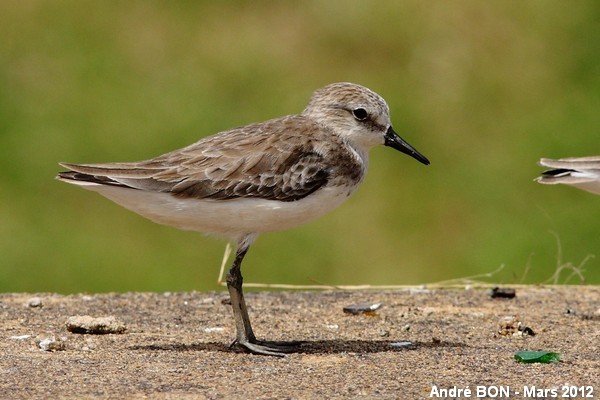
|
This picture has been shot in Cayenne, next to the market place. The small size, the shape of the bill, the colours, the wings not exceeding the short tail, everything matches the Semipalmated Sandpiper species. |
| [To know more about the Semipalmated Sandpiper] [Next picture] [Previous picture] [Top] |
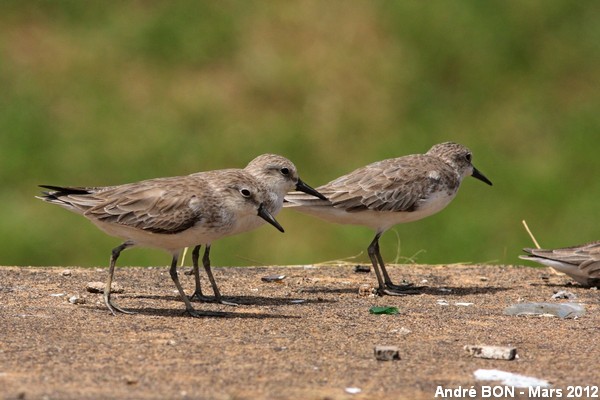
|
You can see the membrane between the toes of the bird on the left (more easily on the non-reduced picture of course). |
| [To know more about the Semipalmated Sandpiper] [Next picture] [Previous picture] [Top] |
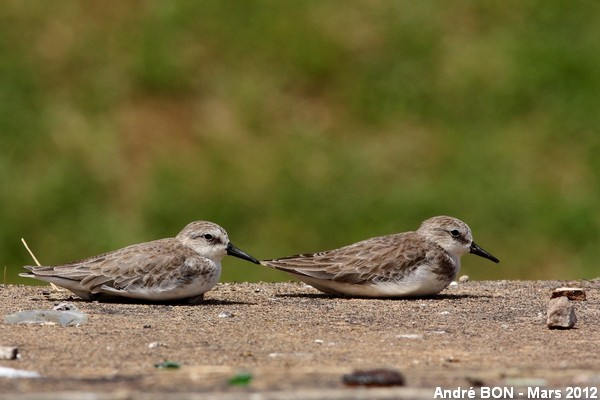
|
The approach has been very easy. These Semipalmated Sandpipers were resting on the banks of a small urban river along which people coming to the market had parked their cars. |
| [To know more about the Semipalmated Sandpiper] [Next picture] [Previous picture] [Top] |
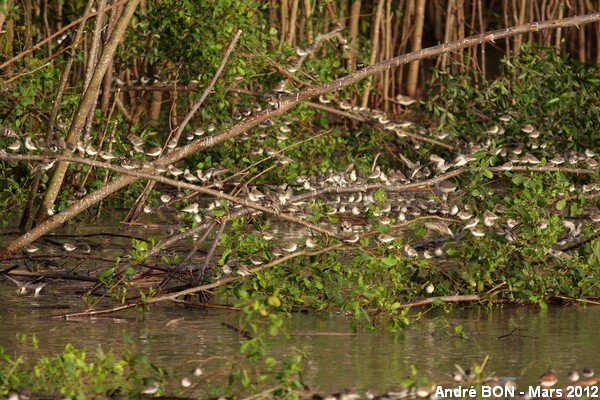
|
I have shot this picture at the old harbour of Cayenne. I better understand now the presence of the Semipalmated Sandpipers on the previous pictures. I have shot these pictures not very far from here. The main part of the flock will spend the night perched in the mangrove. |
| [To know more about the Semipalmated Sandpiper] [Next picture] [Previous picture] [Top] |
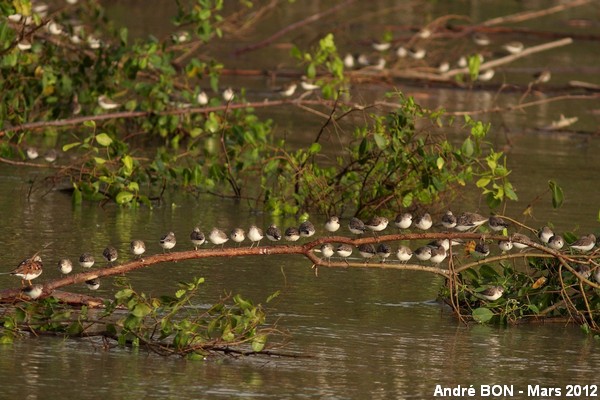
|
The mangroves of the French Guiana coast follow a cycle of about 18 years with phases of development on mud banks and erosion, under the influence of the sediments carried by the Amazon river and ocean streams. At the time of my visit, the mangrove close to the old harbour of Cayenne was in the erosion phase, being carried away by the ocean waves. You just need to look at the pictures to guess the importance of mud banks and mangroves for many bird species. |
| [To know more about the Semipalmated Sandpiper] [Next picture] [Previous picture] [Top] |

|
Unless I'm mistaken (I don't have much experience with small American Sandpipers) I think we have the Semipalmated Sandpiper here. After observing it in one of its wintering areas, it is here closer to its nesting area. |
| [To know more about the Semipalmated Sandpiper] [Next picture] [Previous picture] [Top] |
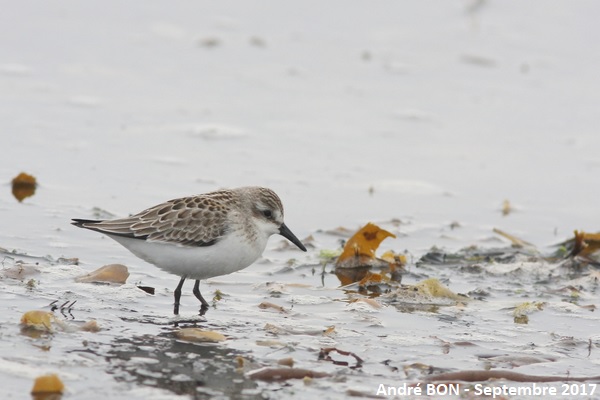
|
Chaleur Bay is really a nice spot for bird watching. |
| [To know more about the Semipalmated Sandpiper] [Previous picture] [Top] |
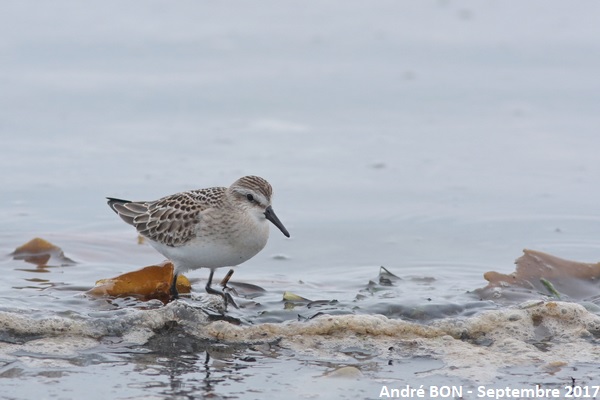
|
It seems to me that you can see the membrane between the toes on this picture. |